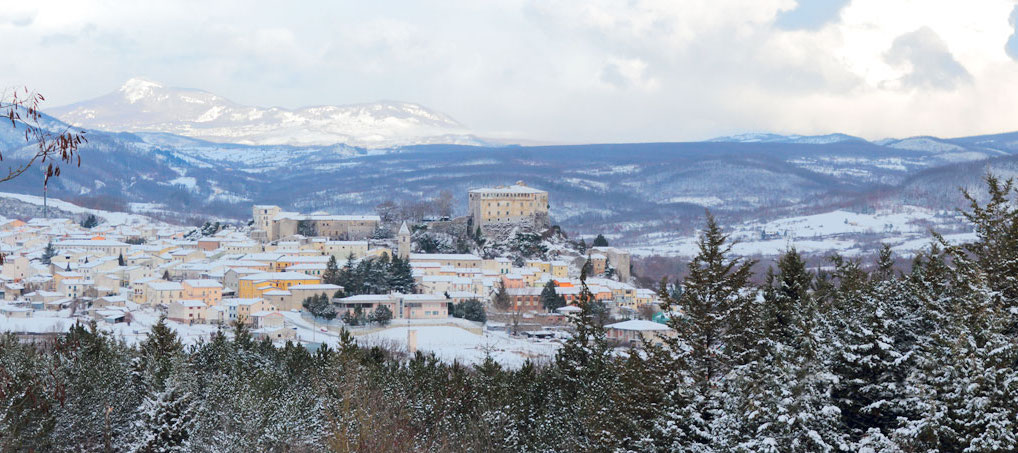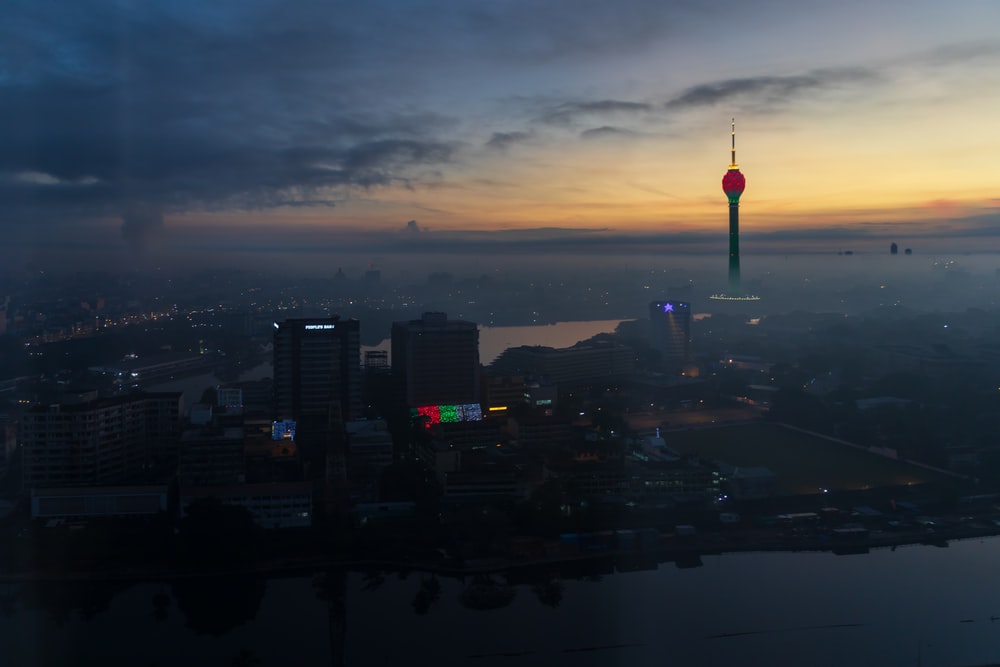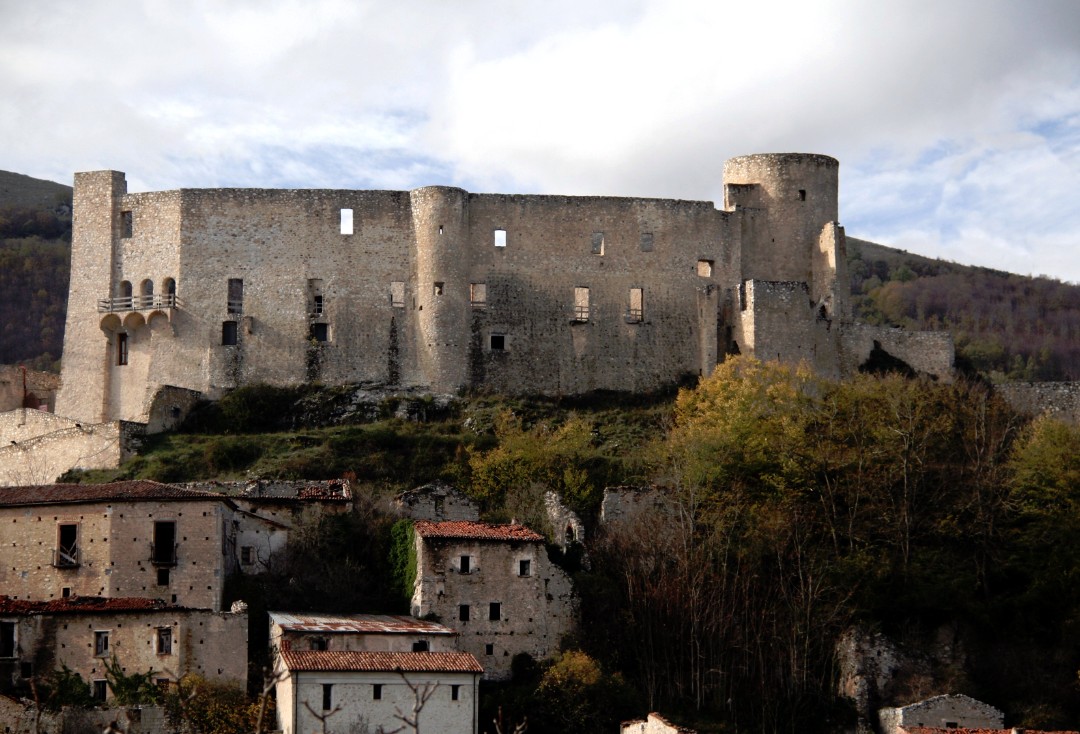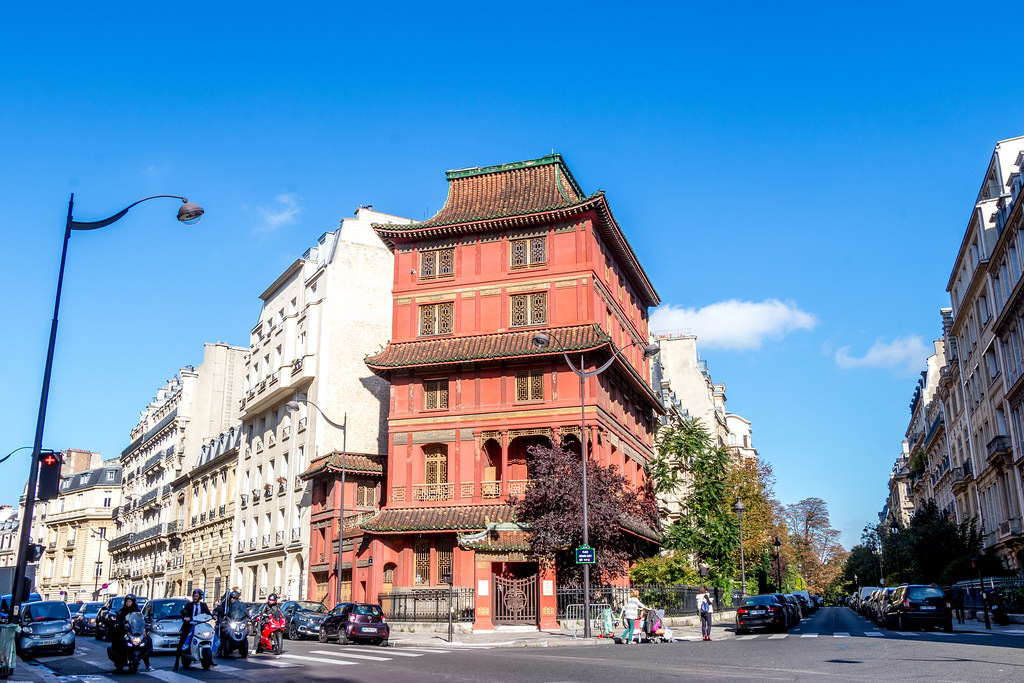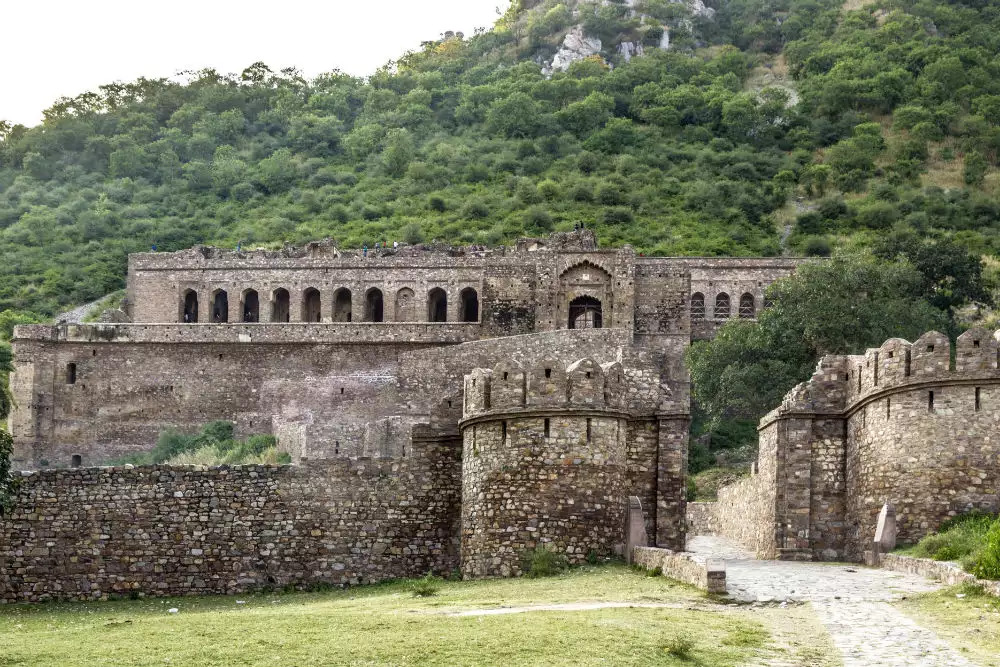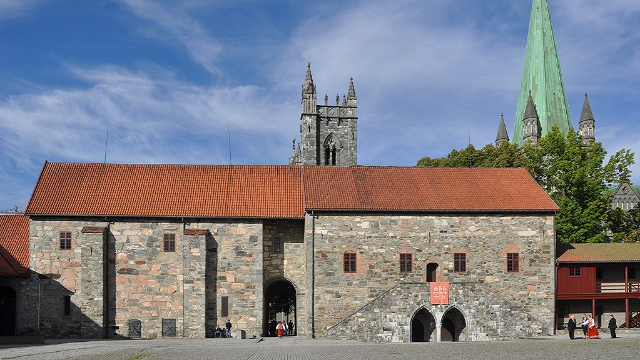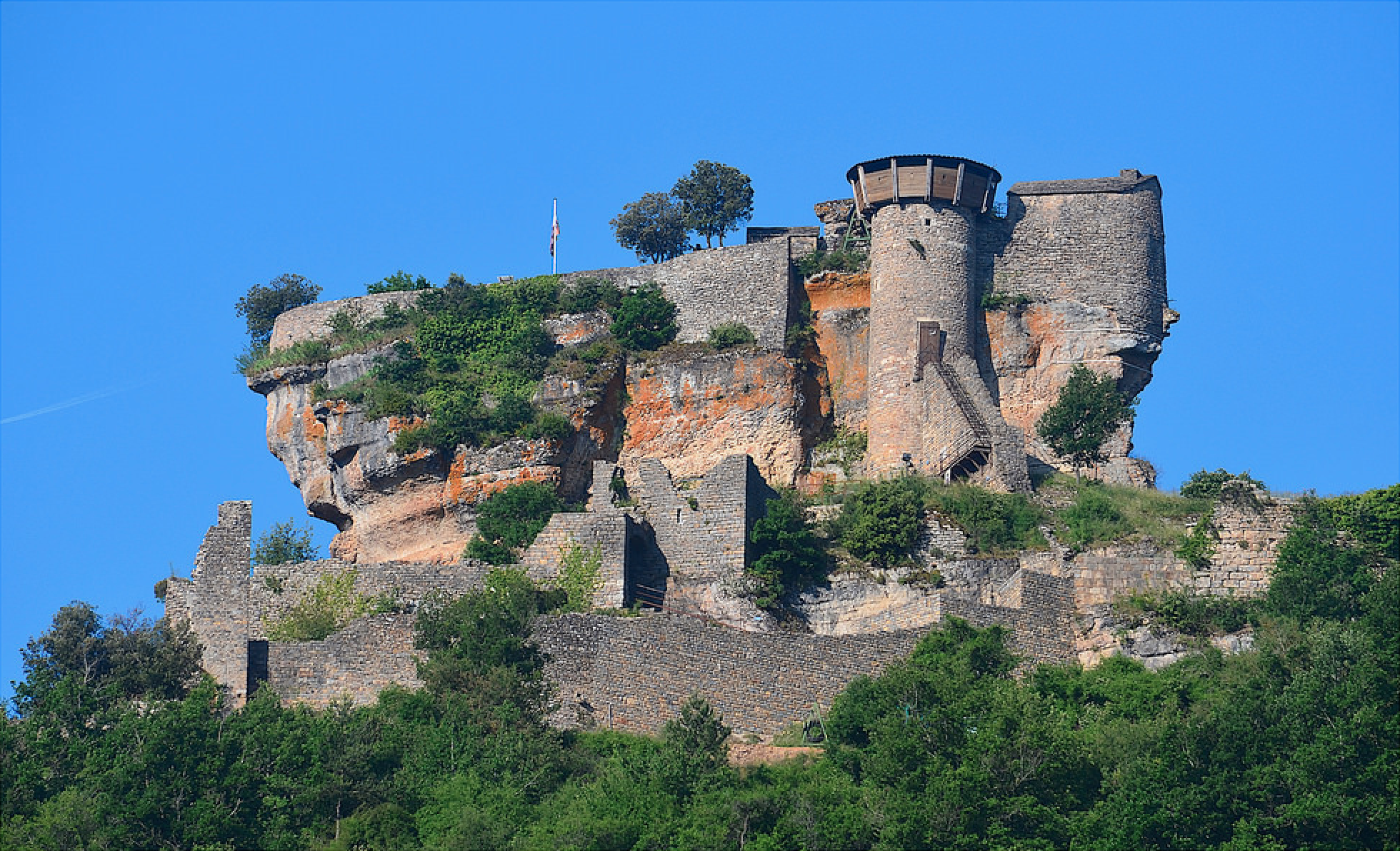In the 4th century B.C. the territory of Pescolanciano was used by the Samnite people mainly to organize themselves in view of the clash with Rome.
Its origins, however, are to be found in medieval times. In Norman times, in the twelfth century, the municipality was called "Pesclum lanzanum": the first of the two terms was to indicate a stone or a boulder, as reported by the historian Galanti, among other things of common use to name a town in medieval times that stood on a cliff or very steep rock; the term "lanzanum" instead has a rather mysterious meaning, as noted by Masciotta himself in his historical analysis.
The Castle of Pescolanciano stands on a rocky hill, looking down on the village of Pescolanciano (IS) and the Tratturo Castel di Sangro – Lucera, 26 km from Agnone and 17 km from Isernia. It is located a stone’s throw from the Collemeluccio Nature Reserve, one of the main areas of a territory of great naturalistic importance: the UNESCO Collemeluccio-Montedimezzo Alto Molise MAB Biosphere Reserve.
The Castle dates back at least to the 12th century, to the times of Ruggero da Pescolanciano, although older sources would place it in the period of Charlemagne. It was owned by various feudal families, mainly the Carafa della Spina between the 14th and mid-16th centuries, who added a new area to the keep tower in the southeast part of the castle.
At the end of 1500 came the noble Neapolitan family of d’Alessandro, from which the Castle today takes its name, which brought together the various separate buildings in a single fortress, built the outer courtyard and the charming drawbridge still used today. The Castle of Pescolanciano remained intact until the earthquake of 1805 when it unfortunately suffered various damages and was abandoned for about 30 years, until the mid 1800s it was restored by Duke Giovanni Maria d’Alessandro, with the addition of the top floor, which was initially a patrol walkway. More recent history tells us that in the twentieth century the manor was mainly inhabited as the summer residence of the d’Alessandro family, only to be abandoned in the mid 70s. In 2000 the Molise Region and the Province of Isernia bought a part of it.
